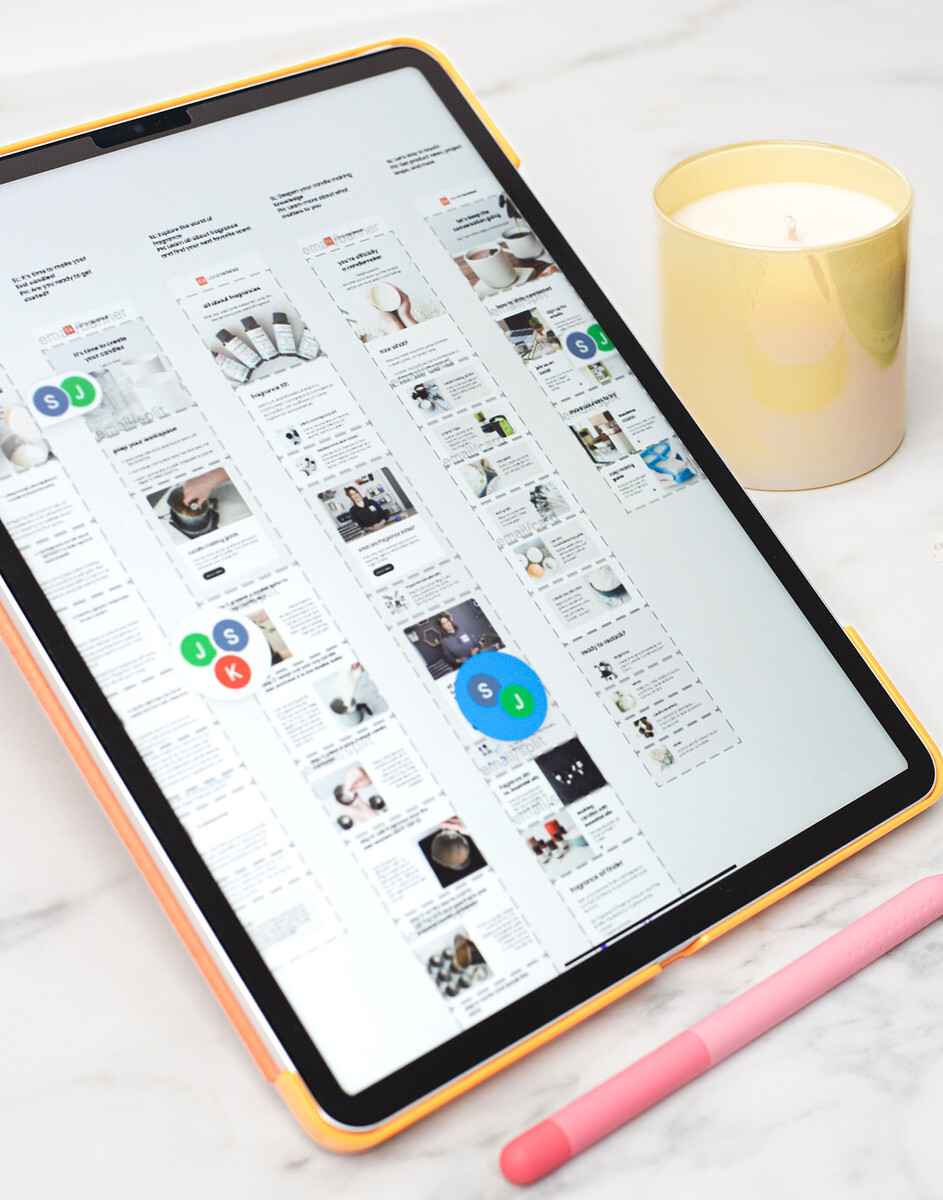How to build and grow an email list: email marketing for makers Learn why email marketing can help your business flourish and how to get started now.

Are you a candle or soap maker who sells online and wants to scale your business? Email marketing is a powerful way to accomplish this goal by connecting with customers and driving sales.
This article is an introduction to email marketing tailored for makers—so if you're thinking of including it in your marketing repertoire, you can begin with confidence!
What is email marketing and why is it important for makers?
Email marketing establishes a direct channel of communication with your audience. It facilitates brand visibility, cultivates relationships, and drives both new and repeat purchases. Email marketing involves sending promotional messages, updates, or newsletters to subscribers who’ve agreed to receive them.
For candle and soap makers, these emails can include:
- announcements about new products and restocks
- special offers and sales information
- peeks behind the scenes and into your creative process
- customer reviews
- ingredient features
- educational content
How effective is email marketing?
Email marketing packs a punch when it comes to getting people to make purchases!
According to a 2022 survey from Sales Cycle, a whopping 59% of people said that email marketing plays a big role in what they decide to buy. And 50% of respondents reported making at least one purchase every month because of an email they received.
When compared to social media, where many makers focus their marketing efforts, email marketing is much more effective at converting perusers to purchasers. Not every email you send will be opened, but with no algorithm in play, and not nearly as much competition for attention, email is a fruitful and direct way to reach your audience.
6 reasons email marketing is important for your candle or soap business
- Direct contact with subscribers. Email marketing lets you talk directly to your customers and people who’ve said they want to hear from you. The typical open rates of marketing emails range from 25% to 50%.
- Better visibility than social media marketing. These days, only a small fraction of your followers see your social media posts. But because email subscribers are more likely to open and click on your messages, email marketing is vastly more reliable for reaching your audience.
- Cost-effective awareness building. Compared to the cost of advertising, email marketing is cheap and typically provides a strong return. The often-cited statistic is that for every $1 spent on email marketing, the average return is around $36. It’s a truly budget-friendly way to foster familiarity and keep your brand top of mind when people are ready to make a purchase.
- Facilitate repeat sales. Once someone becomes a customer and fan of your products, showing up regularly in their inbox is the surest way to increase the chance of them making future purchases.
- Ownership of your audience. Unlike social media audiences, your email list is an asset that belongs solely to you. While the social media platforms that are currently relied on may change or disappear in the future, your email list is forever!
- Access to stats and targeted marketing capabilities. Email marketing platforms offer robust analytics so you can track email performance and refine your efforts. And as your business—and email list—grows, you can target your marketing even more precisely.
How does email marketing work?
Though email marketing may be quite sophisticated in some instances, makers starting out can simplify the process into four steps:
- select an email service provider (ESP)
- create an email list
- build your list by inviting people to subscribe
- send regular emails to those subscribers
Using an ESP is absolutely crucial to marketing your business through email. ESPs allow you to collect email addresses and subscriber names following proper opt-in practices; send mass emails with customizations that give a personal touch; schedule and automate emails; easily create visually appealing marketing emails with templates; and track sent emails so you can see how they perform.
The practice of opting in is essential in email marketing! Opting in means that a person agrees to sign up to your email list and consents to receive marketing emails from your business.
Sending mass marketing emails to people who haven't explicitly signed up to hear from you is called spamming. This not only risks damaging your brand’s reputation and alienating potential customers, more importantly, it may violate privacy standards and anti-spam laws, like the CAN-SPAM Act, which can carry significant fines per violation.
Using an ESP will help ensure you are in compliance with email marketing regulations—though it is also wise to monitor compliance on a semi-regular basis and reach out to your ESP with any questions.
And if you’re based in the United States, but sending emails internationally, be sure to comply with the various anti-spam laws in the destination countries.



How to create an email list
Setting up your email list involves:
- selecting an ESP
- creating an account
- integrating the ESP with your website
Two of the most popular ESP options for makers are Klaviyo and MailChimp. Both are designed to integrate with common ecommerce platforms used by small businesses.
Many ESPs, Klaviyo and MailChimp included, offer free plans to start. As your list and number of sent emails grows, a paid plan will become a necessity. Plans are typically based on the number of subscribers and emails sent.
Because each ESP is different, we recommend using the tutorials, support, and resources available from these platforms to create your account, set up your list, and connect your website.
And it's entirely okay to start with one ESP, then switch to another later on. Why? Because ESPs allow you to download your email list and seamlessly move it to a new provider. The most vital step when beginning your email marketing journey is to select the best ESP for your current needs and simply get started.
How to grow your email list
So, you’ve picked an ESP and created your list. Now it's time to invite people to subscribe!
There are many strategies for growing your list—let’s take a look at some of the most popular for product-based businesses.
5 ways to grow your email list
- Footer sign-up on your website. Make it easy for website visitors to subscribe to your list by including a prominent sign-up form. E-commerce platforms like Shopify usually include this right in the site design.
- Website pop-up. A well-timed pop-up on your site inviting visitors to join your email list can be very effective, especially if it offers an incentive for subscribing. These pop-ups are created using your ESP and common offers include exclusive access to new product releases, a first-order discount, a gift with purchase, or free shipping.
- Transactional email invitations. Include a sign-up link for your email list in the order confirmation and shipping notification emails that are auto-sent to customers when they make a purchase.
- In-person events. Collect email addresses at markets, craft shows, and pop-up events with simple paper-and-pen sign-up sheets or QR codes. This is especially helpful for staying in touch with people who weren’t quite ready to buy from you that day!
- Social media promotions. Already using Instagram or Facebook to market your business? Post email list invitations with a direct link in Instagram Stories or a Facebook post. Consider making this a regular practice to let followers know about your list.
Final thoughts on email marketing
By learning the fundamentals of email marketing and setting up your email list, you've laid a solid foundation for your business’s future success.
Whether you're nurturing relationships with existing customers or reaching out to potential ones, email marketing offers exciting possibilities for engagement and growth.
The next article in this series covers the essential emails to send to your list so you can continue on your email marketing journey!
Are you considering email marketing for your business? Or perhaps you're already collecting those email addresses and sending emails. Share your thoughts, questions, and experiences with email marketing in the comments below!
If you’re interested in more candle business content, be sure to check out our Business Guides. You’ll find in-depth articles on topics like selling wholesale to stores, at markets, and on consignment. Plus get helpful ideas for social media posts, taking product photos with natural light, saving time in your business, and more!